Introduction
Dharma represents the prescribed actions that foster spiritual growth and progression, while adharma signifies unrighteousness. When unrighteousness prevails, the divine creator and administrator of the world intervenes, descending to restore dharma. (In the form of any of the 4 categories of Avatars. What are these categories?? Click here to know…)
Such divine descents are referred to as Avatars. The term “Avatar” has its origins in Sanskrit and is commonly used to describe digital representations on screens, but here, we use it in its original Sanskrit context, signifying the divine descent of God. The Śhrīmad Bhāgavatam lists twenty-four such divine descensions.
यदा यदा हि धर्मस्य ग्लानिर्भवति भारत |
अभ्युत्थानमधर्मस्य तदात्मानं सृजाम्यहम् || 7||
yadā yadā hi dharmasya glānir bhavati bhārata
abhyutthānam adharmasya tadātmānaṁ sṛjāmy aham || 7||
yadā yadā—whenever; hi—certainly; dharmasya—of righteousness; glāniḥ—decline; bhavati—is; bhārata—Arjun, descendant of Bharat; abhyutthānam—increase; adharmasya—of unrighteousness; tadā—at that time; ātmānam—self; sṛijāmi—manifest; aham—I
Translation: “Whenever there is a decline in righteousness and an increase in unrighteousness, O Arjuna, at that time I manifest myself on earth.”
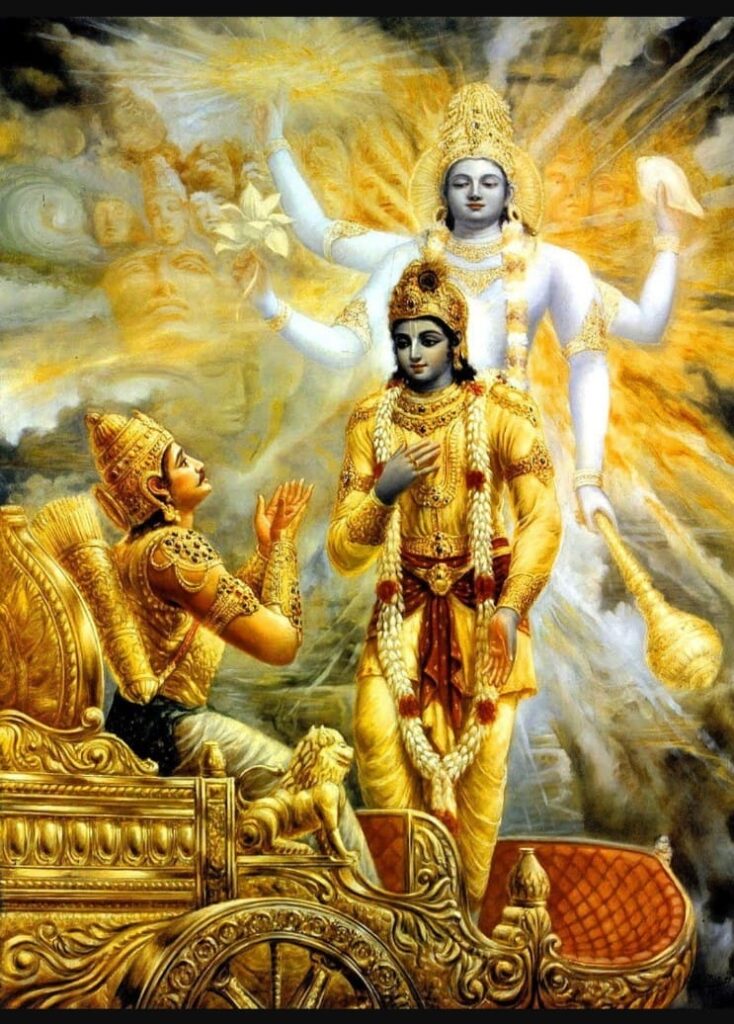
In the realm of spiritual evolution and moral righteousness, Dharma stands as the embodiment of ordained actions, fostering one’s journey towards spiritual enlightenment. Conversely, Adharma embodies the concept of moral waywardness and unrighteousness.
When the scales of righteousness tip towards chaos and unrighteousness, the cosmic architect and custodian of the universe takes it upon Himself to intervene, descending from the celestial realms to restore the balance of Dharma.
These divine incarnations are known as Avatars, a term rooted in the ancient Sanskrit language, a far cry from its modern association with digital representations on screens. In this context, “Avatar” encapsulates the profound concept of the divine descent of the Almighty.
The revered scriptures, Śhrīmad Bhāgavatam, chronicle a total of twenty-four such celestial descents, each bearing the solemn responsibility of upholding cosmic equilibrium.
Who are Avatars? What are the 4 categories of Avatars?
The Vedic scriptures assert that there are innumerable Avatars:
जन्म-कर्माभिधानानि सन्ति मेऽङ्ग सहस्रशः
न शक्यन्तेऽनुसङ्ख्यातुमनन्तत्वान्मयापि हि ||
janma-karmābhidhānāni santi me ’ṅga sahasraśhaḥ
na śhakyante ’nusaṅkhyātum anantatvān mayāpi hi
(Bhāgavatam 10.51.37)[v5]
“Nobody can count the infinite Avatars of God since the beginning of eternity.”
4 categories of Avatars:
These Avatars can be categorized into four distinct groups:
- Āveśhāvatār: In the intricate tapestry of existence, God’s divine powers find their expression through individual souls.
- Sage Narad and the Buddha stand as notable examples of Āveśhāvatārs, where the divine essence resides within them, guiding their earthly journeys.
- Through the celestial melodies of Sage Narad and the profound enlightenment of Buddha, we witness the embodiment of God’s grace in human form.
- These exceptional souls serve as beacons of divine wisdom and serenity, offering profound insights and guidance to those who seek the path of enlightenment.
- Their lives stand as a testament to the boundless stream of divine grace that flows through the cosmos, reminding us of the eternal presence of divinity in our world.
- Prābhavāvatār: When God descends in a personal form, it’s a manifestation of divine grace, revealing a glimpse of His extraordinary powers.
- Prābhavāvatārs, this divine phenomenon, can be divided into two distinct categories:
- Brief appearances: where God unveils Himself for a fleeting moment, serving a specific purpose before departing. An illustrative instance is the Hansavatar, where God materialized before the Kumaras, imparted wisdom, and then gracefully withdrew.
- Lengthy earthly sojourns: as epitomized by Ved Vyas. In this manifestation, God extends His divine presence over an extended period. Ved Vyas, for instance, authored the eighteen Puranas, composed the Mahabharata epic, and played the pivotal role in dividing the Vedas into four distinct parts, bestowing profound wisdom upon humanity throughout his enduring stay.
- These Prābhavāvatārs serve as divine conduits, bridging the celestial and mortal realms, each bearing a unique purpose in the grand cosmic design.
- Prābhavāvatārs, this divine phenomenon, can be divided into two distinct categories:
- Vaibhavatār: God’s descent in His divine form is a manifestation of unparalleled majesty, wherein He showcases an abundance of His divine powers.
- Within this realm of divine manifestations, we encounter the Vaibhavatārs, which include the Matsyavatar, Kurmavatar, and Varahavatar.
- The Matsyavatar, a wondrous incarnation of God, took the form of a fish to preserve the sacred scriptures and protect humanity from the deluge, signifying His boundless wisdom and providence.
- In the Kurmavatar, God manifested as a majestic tortoise, symbolizing His unwavering support and stability, upon which the cosmic Mount Mandara rested during the churning of the ocean of milk.
- The Varahavatar, another awe-inspiring manifestation, saw God take the form of a mighty boar, rescuing the Earth from the depths of cosmic waters, emphasizing His supreme strength and protective embrace.
- These Vaibhavatārs exemplify the grandeur and multifaceted nature of God’s divine powers, each serving as a testament to His omnipotence and divine grace.
- Within this realm of divine manifestations, we encounter the Vaibhavatārs, which include the Matsyavatar, Kurmavatar, and Varahavatar.
- Parāvasthāvatār: Within this sacred category, God manifests the entirety of His divine powers in His personal, transcendent form.
- Here, we find the supreme beings Shree Krishna, Shree Ram, and Nrisinghavatar, each representing a complete embodiment of the divine.
- Shree Krishna, the enchanting Lord, radiates with divine love, wisdom, and unparalleled charm. His life is a testament to the cosmic dance of love and righteousness, guiding humanity with His profound teachings in the Bhagavad Gita.
- Shree Ram, the embodiment of virtue and duty, exemplifies the ideal ruler and devoted son. His unwavering commitment to dharma and justice serves as an eternal source of inspiration for all.
- Nrisinghavatar, the fierce and benevolent half-man, half-lion incarnation, emerged to protect His devotee Prahlada and restore cosmic balance. His awe-inspiring presence reflects God’s omnipotence and boundless compassion.
- In this illustrious category, God’s divine powers shine in their fullest glory, offering humanity a glimpse of His infinite majesty and grace.
- Here, we find the supreme beings Shree Krishna, Shree Ram, and Nrisinghavatar, each representing a complete embodiment of the divine.
Learn more from Swami Mukundananda ji
Epitome of Divine Manifestations: Lord Vishnu’s 24 Avatars
In the sacred Hindu scriptures, it is expounded that whenever malevolence prevails over virtue, when obscurity shrouds the brilliance of truth, or when injustice usurps the throne of justice itself, it is then that Lord Vishnu descends upon the terrestrial realm, assuming mortal form to resurrect Dharma—the very embodiment of righteousness.
These divine incarnations of Lord Vishnu are originally chronicled in the venerable Bhagavad Gita. In total, Lord Vishnu has manifested Himself in 24 unique avatars upon the earthly plane. His purpose? To engage in relentless combat against the forces of maleficence, while simultaneously illuminating the path of righteousness for humanity.

Enumerated below is a compendium of Vishnu’s avatars, elucidating the diverse forms He assumed in His ceaseless battle against iniquity throughout the annals of time:
- Adi Purush – The paramount incarnation of Lord Vishnu, embodying the very essence of divine existence.
- Four Kumars – The inaugural quartet of sentient beings, conceived by the divine hand of Lord Brahma himself.
- Narada – Narada, the progeny of Lord Brahma, emerges as a fervent adherent of Lord Vishnu, exuding profound devotion.
- Nara Narayana – Nara and Narayana, twin sages, jointly epitomize the avataric manifestation of Lord Vishnu.
- Kapila – Kapila, an incarnation of Lord Vishnu, is extolled as a luminary in spiritual wisdom.
- Dattatreya – Dattatreya represents a trinity of divinity, encompassing Brahma, Vishnu, and Shiva in a singular form.
- Yajna – A sacred rite in which flames are kindled, and offerings are made to beseech divine favor from celestial deities.
- Rishabha – Rishabha, a revered spiritual luminary, assumes the mantle of a divine preacher.
- Prithu – Prithu, the inaugural sacred monarch, exemplifies virtuous kingship and leadership.
- Dhanvantari – Dhanvantari, bearing the elixir of immortality (Amrit) in a celestial vessel, emerges as a harbinger of wellness.
- Mohini – Mohini, a female avatar of Vishnu, beguiles with divine grace and enchantment.
- Hayagriva – Hayagriva, characterized by a man’s form crowned with the head of a horse, signifies profound wisdom.
- Vyasa – Vyasa, the venerable author of the Mahabharata, imparts unparalleled wisdom to the world.
- Matsya – Matsya, taking on the form of half-fish and half-human, safeguards sacred scriptures and humanity during the cosmic deluge.
- Kurma – Kurma, the amalgamation of tortoise and man, emerges during the celestial churning of the ocean (Samudramanthan).
- Varaha – Varaha, a divine hybrid of man and boar, embodies the relentless pursuit of virtue.
- Narsimha – Narsimha, with the visage of half-man and half-lion, intervenes to vanquish malevolent forces and restore equilibrium.
- Vamana – Vamana, the diminutive divine incarnation, descends to curtail the burgeoning might of the demonic monarch Mahabali.
- Parshuram – Parshuram, depicted as a sage wielding an axe, embodies valor and rectitude.
- Rama – Rama, taking human form, embarks on a quest to vanquish maleficence and safeguard His devout followers.
- Balrama – Balrama, featured prominently in the Mahabharata, assumes the role of Lord Krishna’s elder brother.
- Krishna – Lord Vishnu, incarnated as Krishna, engages in the destruction of demons and wicked monarchs in neighboring realms.
- Buddha – The incorporation of Buddha into the Hindu pantheon serves as a strategic effort to mitigate the influence of Buddhism.
- Kalki – Kalki, the future avatar of Vishnu, is poised to manifest and fulfill His divine mission in a world yet to come.
In essence, these incarnations transcend mere human understanding and chronicle an epic battle between good and evil, resonating through the corridors of time.
We will talk about every Avataras in different Blogs. Stay tuned.
Epilogue
In the realm where Avatars descend, a truth we must embrace, No rank or measure shall define their celestial grace, Ved Vyas, an Avatar wise, in his words doth confide, ‘All God’s descents, divine and pure, in them, all powers reside.’
No hierarchy of size or might, no lofty throne they seek, Each Avatar a cosmic dance, a role unique and meek, They bear within them latent gifts, concealed from mortal eyes, Unveiling in their sacred quest, beneath the boundless skies.
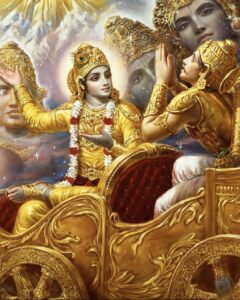
Classifications born of love, to honor their divine mission, In the tapestry of existence, each thread, a unique rendition, Let not our earthly judgments, in arrogance, amass, For every Avatar, a vessel of God’s eternal compass.
In reverence, we hold them close, in our hearts they reside, In poetic verses, their stories we tenderly confide, In this grand cosmic theater, where destiny’s spun and spun, Avatars descend, their journeys begun, ‘neath the eternal sun.
Do read about 7 Most Important Teachings of the Bhagavad Gita
It’s essential to note that this classification doesn’t imply superiority or inferiority among Avatars. As Ved Vyas, an Avatar himself, states: “All the descensions of God are replete with all divine powers; they are all perfect and complete.” Hence, we should avoid distinctions of size or stature among Avatars. Each Avatar manifests specific powers according to the objectives of their descent, with latent powers residing within them. These classifications were created to differentiate based on these manifestations.
FAQs – Avatars in Spiritual Philosophy
1. Who are Avatars?
2. What are the 4 categories of Avatars?
Āveśhāvatār: These are individuals in whom God’s divine powers find expression, guiding their earthly journeys. Sage Narad and Buddha are examples of Āveśhāvatārs.
Prābhavāvatār: Prābhavāvatārs are manifestations of divine grace, categorized into brief appearances (e.g., Hansavatar) and lengthy earthly sojourns (e.g., Ved Vyas).
Vaibhavatār: These Avatars represent God’s divine form and power, including Matsyavatar (the fish), Kurmavatar (the tortoise), and Varahavatar (the boar).
Parāvasthāvatār: In this category, Avatars manifest the entirety of God’s divine powers in their transcendent form, including Shree Krishna, Shree Ram, and Nrisinghavatar.
3. How many Avatars are there?
But as mentioned in the Bhagavad Gita, Lord took 24 Incarnations or Avataras on earth, to fight over the evil, and guide people on the right path.
You can read about these avataras here.



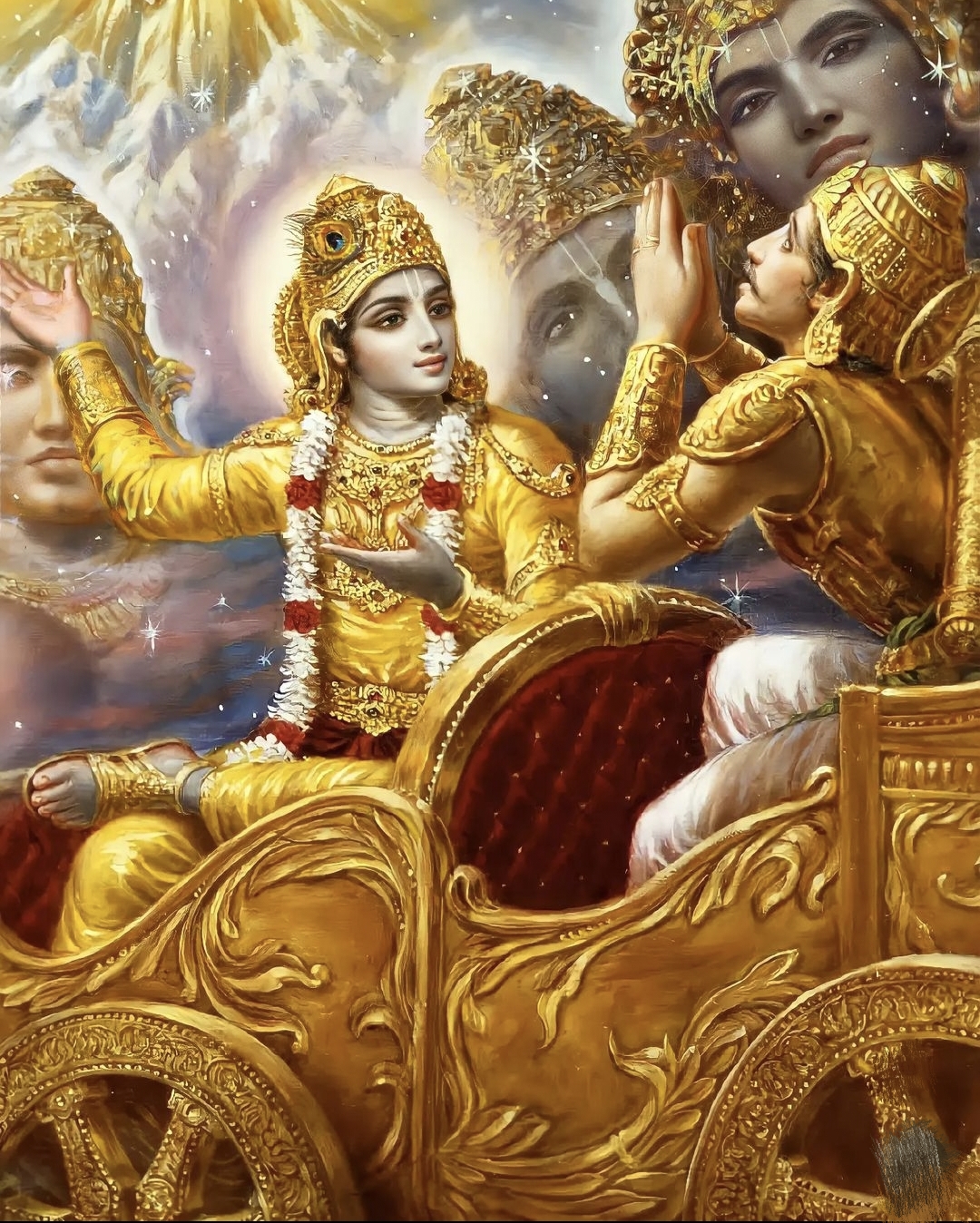
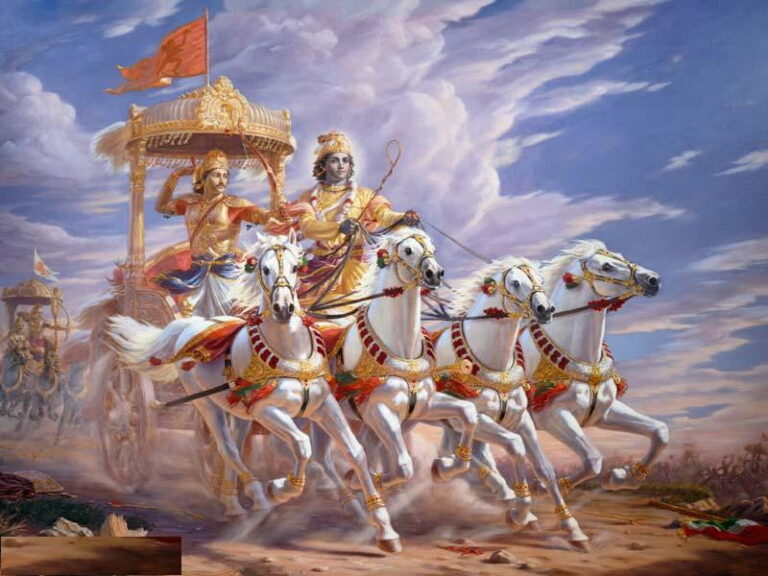
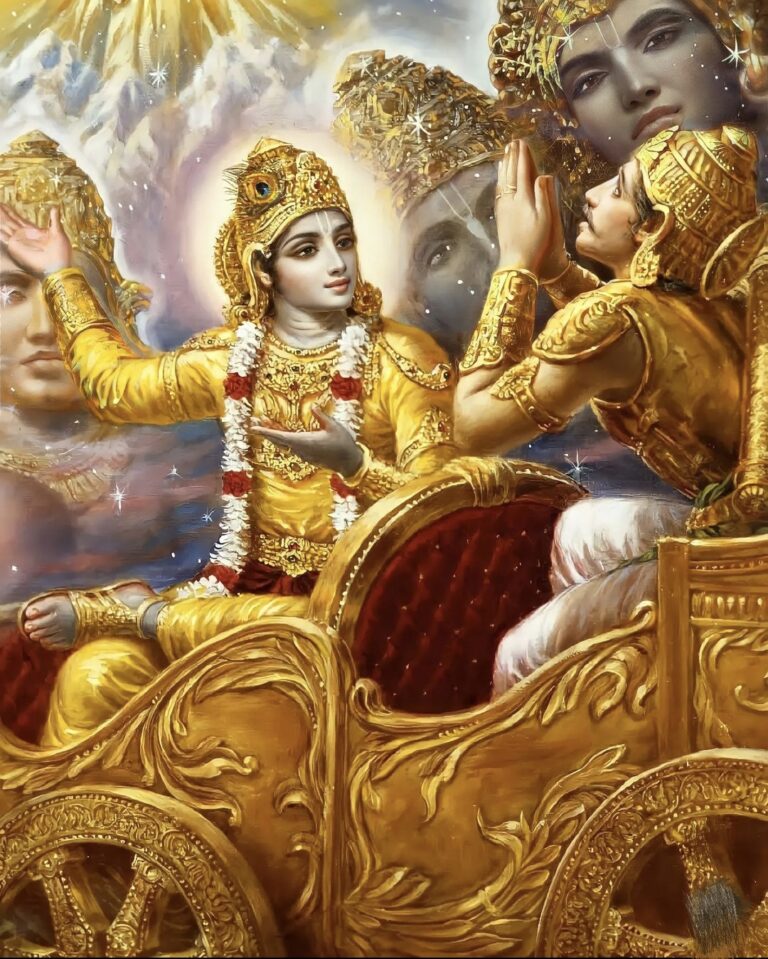
+ There are no comments
Add yours